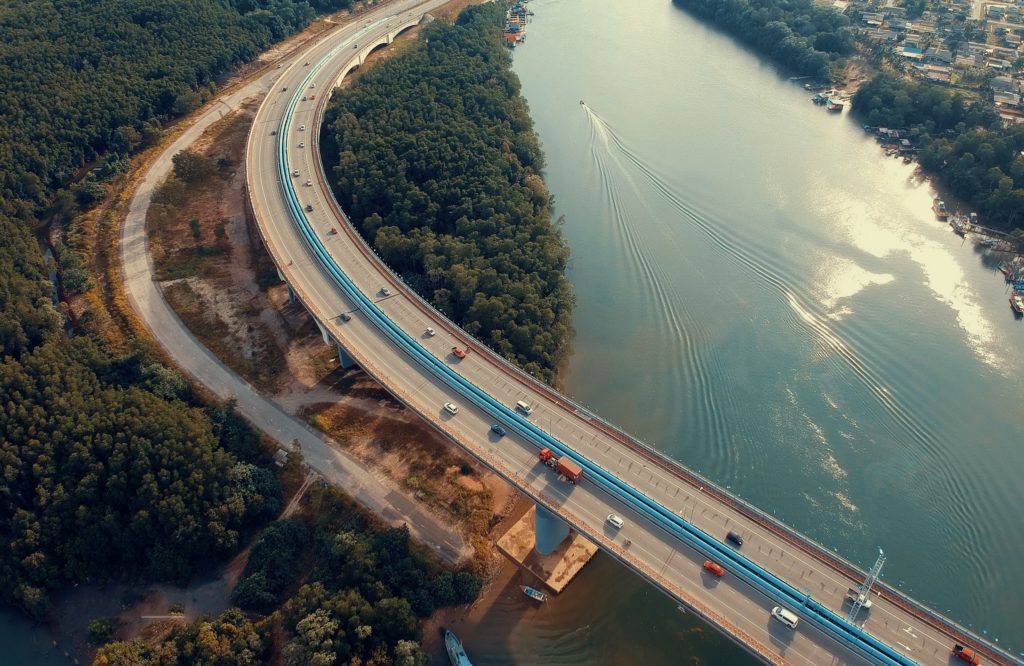Addressing tyre and
road wear particles
This poses a challenge: how can we reduce tyre and road wear particles without impacting the important role tyres play in road safety and mobility?
Tyres keep us moving
Tyres have essential functions
Mobility
Tyres help move people and goods from point A to point B. They are a vital part of any moving vehicle today.
Road safety
The primary role of tyres is to hold the vehicle on the road and contribute to safety in various driving conditions, e.g. in sudden or frequent braking.
Efficiency
Tyre design can reduce a vehicle’s energy
consumption and CO2 emissions.
Addressing Tyre and Road Wear Particles
When the rubber meets the road…
A tyre secures a vehicle on the road and performs its safety and mobility functions through friction with the road surface. Friction between tyres and roads is needed for grip on the road, but it also leads to abrasion of both the tyre and road generating particles. Similarly, particles are released by the friction between shoe soles and pavements when walking.
…Particles are generated
Tyre and road wear particles are a mixture of tyre tread fragments and road surface elements, such as minerals and road dust, approximately 50% each. These particles are commonly considered microplastics because of their size and composition. Generated by the friction between roads and tyre surfaces, they are called ‘unintentionally released microplastics.1
WHAT ARE
MICROPLASTICS?
‘Microplastics’ are pieces of plastic in the environment which come from different sources. There is no single definition of microplastics, but the term usually refers to particles with a diameter of 5 mm or less than 5 mm that include polymeric material (‘plastics’) in their composition.1 The full impact of microplastics on environmental and human health is still unknown and the subject of on-going research.
1 European Commission, “A European Strategy for Plastics in a Circular Economy” (2018)
What are the factors generating particles?
Many factors affect tyre tread abrasion rates (the total amount of mass lost from the tyre surface due to interaction with the road per unit of distance).
Tyre design
Vehicle characteristics
Road surface
Weather
Road topology
Driving behavior
Factors, such as driving behaviour, road and vehicle characteristics, can together have a much bigger influence on the rate at which tyre and road wear particles are formed than tyre design alone. This is why it is so important to adopt a holistic approach when addressing this challenge.
We’re working on solutions
But knowledge gaps on the distribution and transportation of tyre and road wear particles and their impact on environmental and human health still exist. The tyre industry is engaged in contributing to fill these first. The European Tyre and Rubber Manufacturers’ Association (ETRMA) strives for a clean environment and safe roads. It works together with partners to fill the knowledge gaps on tyre and road wear particles and develop practical solutions for reducing the levels of these particles found in the environment.
Over the last decade, the tyre industry has led a variety of international research projects and initiatives:
TRWP (Tyre and Road Wear Particles) Platform:
- A multi-stakeholder platform launched by ETRMA and facilitated by the European Business Network for Corporate Social Responsibility in 2018.
- The platform brings together governments, academia, non-governmental organisations and industries.
- Through an open and inclusive dialogue, the Platform aims to share scientific knowledge, achieve a common understanding of the possible effects of particles generated during normal tyre use and wear, and co-design mitigation options to reduce TRWP.
- Visit the Platform website here
“Characterising export of land-based microplastics to the estuary”
- ETRMA-commissioned study analysed the distribution and retention of tyre and road wear particles in freshwater and transportation to saltwater environments.
- Main conclusion shows that 2-5% of particles generated on roads are estimated to arrive at the end of river streams before they flow into the open waters of seas and oceans.
The World Business Council for Sustainable Development’s (WBCSD)
Tire Industry Project (TIP):
- The primary global forum for the tyre industry on sustainability issues that aims to proactively identify and address any potential human health and environmental impacts associated with tyres.
- 15 years of TIP research are available free of charge at this link.
- TIP’s research has found that the presence of tyre and road wear particles pose a low risk of toxicity to aquatic organisms.
- TIP has announced further research on the presence and impact of these particles in different environments (air, soil, river and lake deposits, estuaries and oceans).
On-going research project and initiatives:
The TRWP Platform concluded in June 2019. The Platform’s Way Forward Report outlines the possible mitigation measures that were identified during meetings of this initiative and recommendations for continued collaboration.
The European Tyre and Technical Organisation (ETRTO) is developing by 2023 a reliable and reproducible method to measure tyre abrasion rate for passengers car tyres, reflecting European usage.
To learn more on the progress please click here.
Through the Tyre Industry Project (TIP), several European Tyre and Rubber Manufacturers’ Association (ETRMA) members are contributing to projects to further understand the potential environmental and human impacts of tyre and road wear particles.
And it’s a common effort
The tyre industry’s efforts alone will not be enough to solve the issue
The essential role tyres play in enabling movement of people and goods means that there are no ‘quick fixes’ to reducing or eliminating tyre and road wear generation. It requires appropriate, science-based and stakeholder-driven solutions, considering both tyre design and the diverse external factors at play.
The European tyre industry is supporting greater cooperation and partnerships across industries towards this end. In addition, on-going industry-driven research will continue identifying and, where appropriate, implementing solutions in the medium-term.
News & Resources
You will find the latest initiatives and research here:

European TRWP Platform Included as Good Example in the Tyre Industry’s Sustainability Roadmap

OECD publishes microplastics report with a focus on textiles and tyres

Workshop on Microplastics from Tyre Wear: Knowledge, Mitigation Measures, and Policy Options
About & Contact
About ETRMA
The European Tyre and Rubber Manufacturers’ Association is the voice of the tyre and rubber goods producers to various European institutions. Its activities focus on representation, coordination, communication, promotion and technical liaison. Corporate members include: Apollo Vredestein, Bridgestone, Continental, Goodyear, Hankook, Michelin, Nokian Tyres, Pirelli, Sumitomo, Trelleborg.